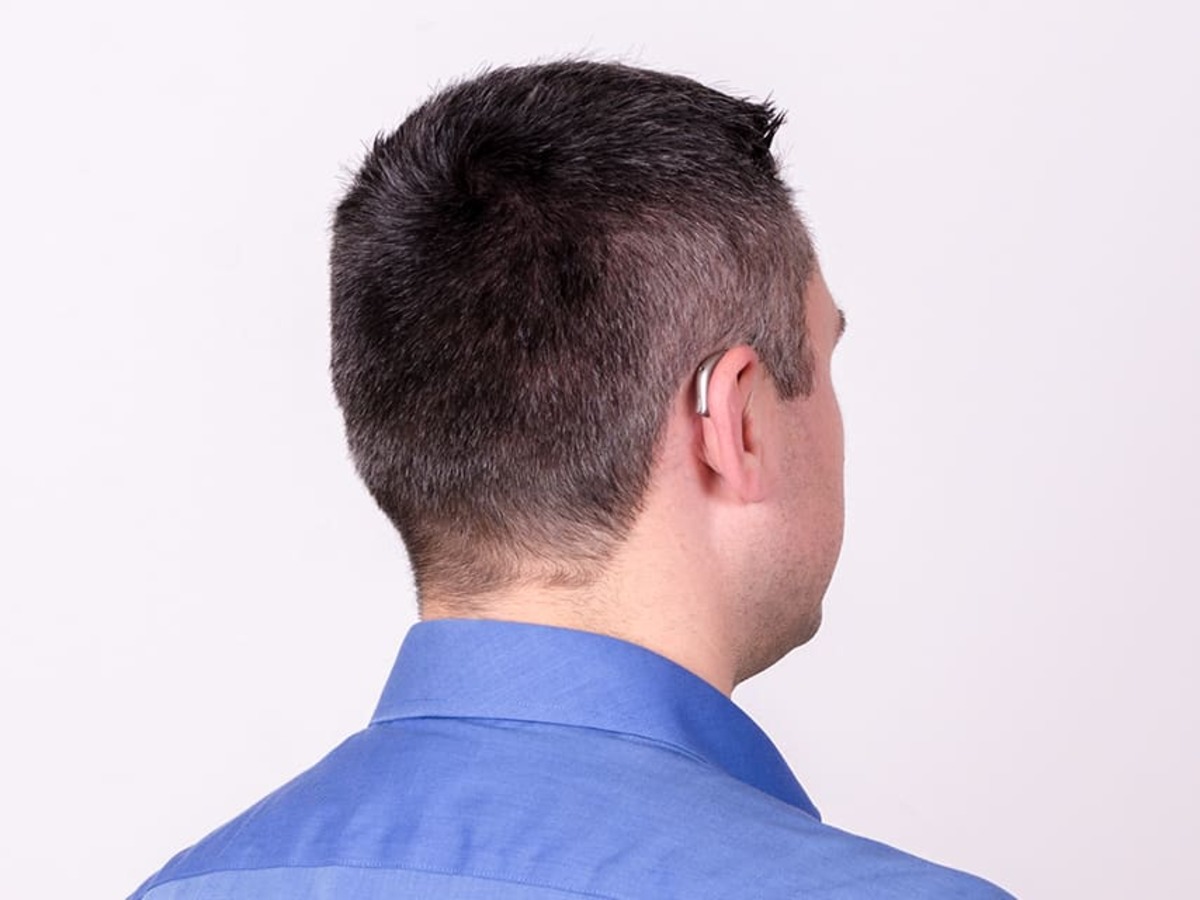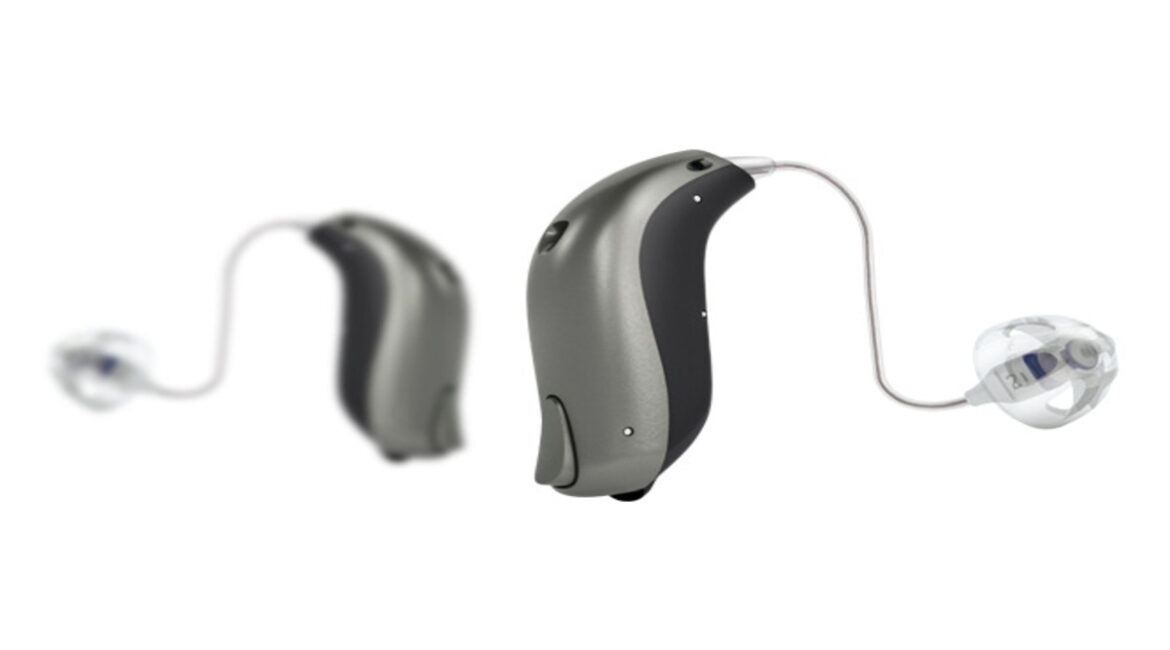Image via bernafon.com
A small plastic “micro” tube that stretches from the hearing aid’s body (located behind the ear), across the outer ear, and into the ear canal is used in RICs, a type of open-fit hearing aid. Without sealing the ear canal, a tiny, soft tip rests there. Air and your own voice can naturally continue to travel to the ear canal in this way.
What Are Receiver In Canal Hearing Aids
The receiver-in-canal hearing aids are renowned for being incredibly covert. Receiver-In-Canal (RIC) hearing aids are compact, unobtrusive, and easy to put on. Other names for them are receiver-in-ear hearing aids (RITE).
Despite the fact that the hearing aid’s body is hidden behind the ear like behind-the-ear (BTE) hearing aids, they are typically small and undetectable. They typically go unnoticed until someone is looking extremely closely.
The thin cable that connects the receiver-in-canal hearing aid’s main body to the ear canal will lie against the user’s ear and along the border of their face, making it virtually undetectable. Because of them, receiver-in-canal hearing aids rank among the stealthiest on the market.
Due to their compact size, discretion, and extreme versatility, these hearing aids are extremely well-liked by both professionals and regular users.
Since they were first released a few years ago, their appeal has only grown, and they now account for most hearing aid purchases.
Are RIC and RITE Hearing Aids the Same
It isn’t much; some manufacturers call them (RITE), others RIC. They are exactly the same in idea.
Who Is a Good Candidate for RIC Hearing Aids
For many people wearing hearing aids for the first time, these devices are ideal. The receiver-in-canal can accommodate a range of hearing losses, from light hearing loss to moderate hearing loss and severe hearing loss, thanks to the adjustable receiver.
If the hearing specialist has available and in stock receivers, the receiver change or repair can typically be completed quickly in the office for the receiver-in-canal hearing aid user. Additionally, it implies that the specific component can be quickly replaced with a new one if the receiver malfunctions.
In some circumstances, the hearing aid wearer can also do it.
Cost of RIC Hearing Aids
Depending on the brand, model, and features, Hearing Partners’ hearing aid prices range from $1,605 to $7,597 per device. You can contact us to learn more about the pricing.
How to Care For Your New RIC Hearing Aids

Image via bernafon.com
Hearing aids are tiny, electrical devices that work in warm, humid environments (your ear) conditions that are unfavorable to most electronics. It makes a lot of sense for you to keep them in the finest condition by cleaning and maintaining them at home after making a significant investment in being able to hear better.
The makers of hearing aids go to tremendous lengths to guarantee that your device will function properly. However, those hearing aids will stop working if you don’t do your part. A failure may frequently need sending something out for repair. Depending on how busy the repair facilities are, you can be without your hearing aid for up to two weeks as a result. People who have grown accustomed to hearing better with their hearing aids detest going without them. The idea is to keep your hearing aids in good condition as much as you can to prevent any inconvenience because it truly aggravates them.
Now let’s get to the meat of the matter: how can you effectively take care of your aids? Here are a few quick ideas for attaining a hearing aid before we continue:
Establish a daily schedule.
- Make sure to thoroughly clean the receivers and microphones on your hearing aids.
- Check out the seven things you must do if your hearing aid becomes wet before drying them out.
Cleaning instruments and hearing aids
Every manufacturer includes a cleaning kit with their hearing aids, so you should clean them daily. Typically, it comes with a wax pick, a cloth, and a wax brush. These tools are made to make it easier for you to take care of your prosthetics, and utilizing them properly will help them last longer.
In the case of RIC hearing aids, filters have also been developed by hearing aid manufacturers to safeguard hearing aid receivers. Along with your hearing aids, you will receive at least one pack of them. Usage Them; correct use of wax filters, also known as wax caps, will safeguard your receiver and prolong its lifespan.
Wax and moisture seeping into hearing aid receivers or microphones is the main reason for failure. You can prevent a lot of these issues if you update your wax guards when they need to be changed.
Clean and avoid putting oil on your hearing aids.
Before handling your hearing aid, make an effort to ensure that your fingertips are tidy and dry. Because the microphone input is so small, dirt and grease from your fingers can clog it.
Keep moisture out of your hearing aids.
Make sure to take your hearing aids out before taking a shower, bath, or swimming since moisture will destroy them. Don’t leave your hearing aids in the bathroom while you take a shower. Make sure the battery compartment is left open at night. Utilizing a drying kit is wise.
Keep children and pets away from hearing aids.
Make sure that kids and pets cannot access your hearing aids. Without the battery door open, hearing aids left on a counter generate a high-frequency sound that can entice dogs. You have no clue how many times I have witnessed dogs consuming hearing aids.
Keep makeup and hairspray apart from each other.
Make careful to take off your hearing aids before applying any powder makeup or hairspray if you do. The microphone input and volume control switch may become clogged by the tiny hairspray or powder makeup particles.
Get the Best Receiver In Canal Hearing Aids

Image via bernafon.com
The best types of hearing aids depend on a variety of criteria, including your ear anatomy, your desired features, your budget, your lifestyle needs, and other considerations.
To choose the finest Receiver in the Canal (RIC) Hearing Aids for better hearing, it is best to consult our J Glasses hearing aids in Singapore by making an appointment or contact us to find out more.

